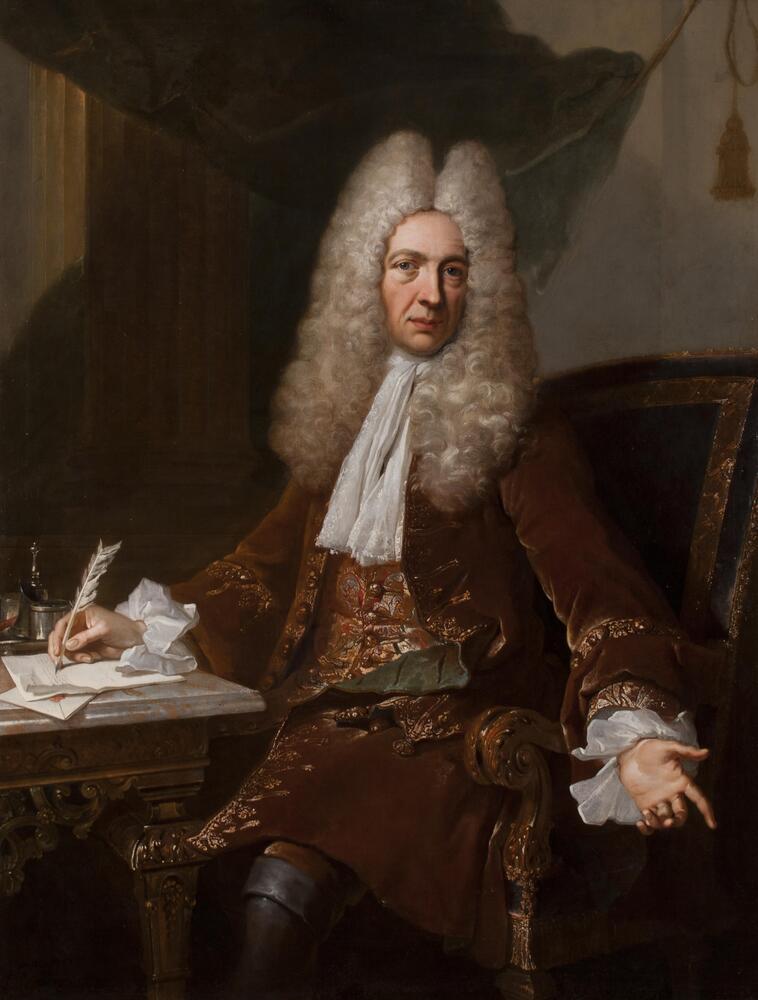Lesson Plan: The Science of Seeing Art
“Curriculum Slam: Classroom Resources,” November 29, 2014 UMMA Teacher Workshop to create Post-Visit Lesson Plans linked to UMMA’s permanent collection
Objectives
Students will learn how light and optics function to allow viewers to see art and color.
National Core Standards
- Perceive and analyze artistic work
Grades
6-12
Time Required
One class period
Materials
- Image of Oudry, “M. Bachelier, Director of Customs at Lyon”
- Access to YouTube informational videos or websites
Lesson
- Discuss: How does the human eye see? Discuss the anatomy of the eye. Draw the eye and label the most important parts, according to your students’ prior knowledge. For additional resources, watch the KidsHealth video “How Your Eyes Work” (https://www.youtube.com/watch?v=syaQgmxb5i0) or SciToons “How Do We See Color?” (https://www.youtube.com/watch?v=pvC9MQvqHMQ) or University of Michigan’s Kellogg Eye Center’s website “How the Eye Works” (http://www.kellogg.umich.edu/patientcare/conditions/anatomy.html). To reinforce anatomical vocabulary, students could sketch and illustrate the human eye, learning how to represent it naturalistically. Explain that artists are employed to illustrate anatomy textbooks, introducing this as a potential career for artists.
- Introduce the camera obscura by showing an image, or possible model. Compare with the human eye. What are the similarities?
- Show students examples of paintings or etchings created using the camera obscura, such as those by Jean-Baptiste Oudry, Albrecht Durer, or Johannes Vermeer. How can we tell they have used the camera obscura? Depending on students’ maturity, they could view portions of Tim’s Vermeer, a documentary film about Vermeer’s scientific methods of seeing.
- Extension activity: students could build a rudimentary pinhole camera, following an online model such as Kodak’s tutorial: http://wwwca.kodak.com/global/en/consumer/education/lessonPlans/pinholeCamera/pinholeCanBox.shtml
- Extension activity: View and discuss artists who use light itself as a medium, such as Angela Bulloch, Ben Rubin, Bill Culbert, Gunda Foerster, James Campbell, James Turrell, Jenny Holzer, Keith Sonnier, Olafur Eliasson, Rafael Lozano-Hemmer, or Robert Irwin. How do they employ the way the eye works as a key component of their art?
Rate this Resource
AVG: 0 | Ratings: 0
& Author Notes
Creative Commons by-nc-sa (Lesson created by Amy Warner, Karen McDonald, and Laura Wayne)Last Updated
April 18, 2018 3:22 p.m.Report
Reporting Policy

